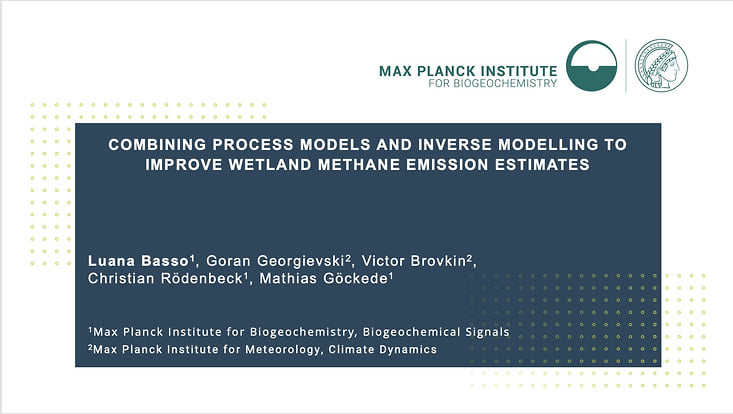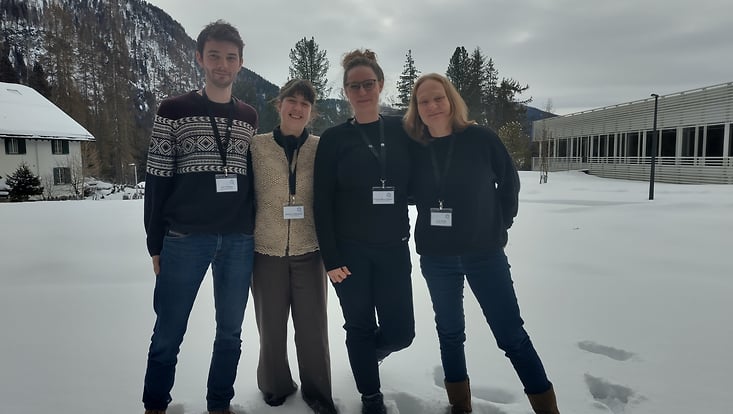Invited MOMENT-talk at AGU 2024
22 January 2025

Photo: Luana Basso
MOMENT research receives international recognition! Luana Basso from the Max Planck Institute for Biogeochemistry was invited as speaker at the renowned international annual conference of the American Geophysical Union (AGU). She talked about the value of region-specific parameterization and the use of inverse modelling when estimating Arctic methane budgets.
Scientists from the MOMENT project attended the Annual Conference of the American Geophysical Union (AGU), which was held 9-13 December 2024 in Washington, D.C., USA. Luana Basso from the Max Planck Institute of Biogeochemistry (MPI-BGC) gave a presentation as an invited speaker in the session "Methane Emission Feedbacks from Natural Systems: Reducing Uncertainties from the Tropics to the Poles". Basso's presentation, "Combining Process Models and Inverse Modelling to Improve Wetland Methane Emission Estimates", highlighted the use of atmospheric inversions and bottom-up process models to address discrepancies in methane flux estimates. Focusing on the Arctic-Boreal region, she demonstrated the value of region-specific parameterisations for refining methane budgets. The presentation was very well received by the members of the audience.
Besides Basso, also Lars Kutzbach from University of Hamburg, Mathias Goeckede from MPI- BGC as well as Victor Brovkin and Goran Georgievski from Max Planck Institute for Meteorology attended the AGU 2024. Kutzbach gave an oral presentation about what he and his team learned from 20 years of eddy covariance measurements of CO2 land-atmosphere fluxes at the lowland tundra of the Siberian Lena Delta. Other than written in the abstract, the team’s most advanced analysis of the complex dataset revealed no significant change of the CO2 uptake during the growing season – despite strong regional atmospheric warming and a clear greening of the tundra vegetation during the last two decades. Goeckede explained how shifts in hydrology and the energy budget in Arctic landscapes affected permafrost degradation. Brovkin emphasized from model results how the Arctic permafrost might function as a tipping element of the climate system. Georgievski presented the protocol for stabilizing the climate at global warming levels of 2°C, 3°C, and 4°C within an adaptive concentration and adaptive emission-driven Earth System Model. He focused on the impact of permafrost carbon and emphasized the potential for utilizing this method in the Tipping Point Model Intercomparison Project (TIPMIP).
The MOMENT researchers took home a number of new ideas and food for thought from the conference. “The location had a relaxed atmosphere that made it easy to have interesting discussions. The variety of scientific topics and sessions was impressive, and it was wonderful to see so many young scientists in the conference.”, Basso said.


